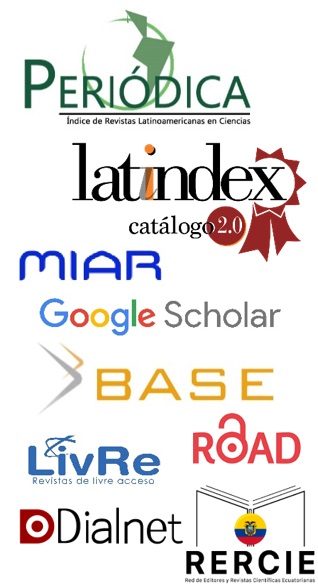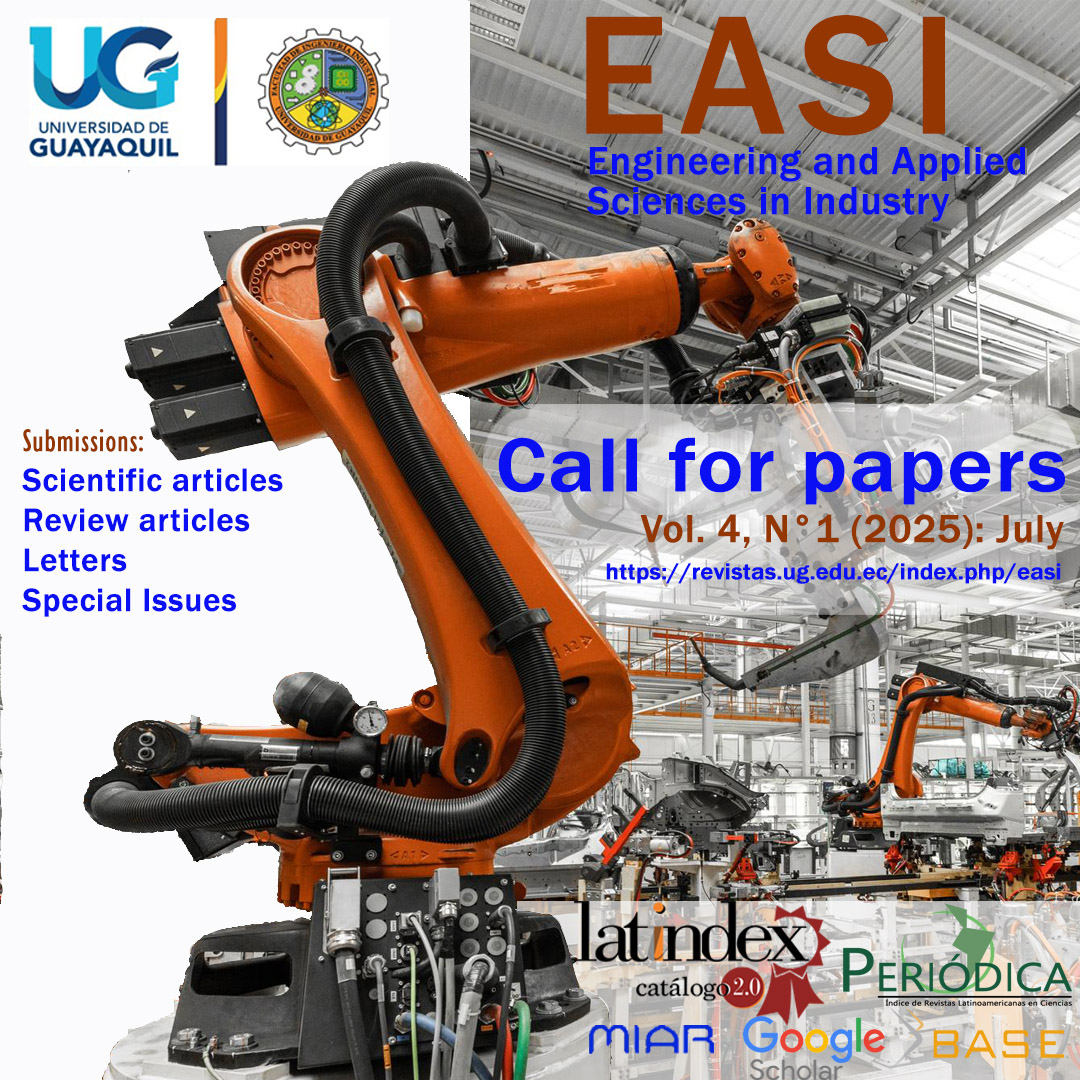SYSTEM CALL: SMART TRASH COLLECTION (STC) DISTRIBUTED PLATFORM FOR THE ON-ROAD COLLECTION OF WASTE FROM OVERPOPULATED CITIES
DOI:
https://doi.org/10.53591/easi.v1i1.1770Keywords:
Smart waste management, internet of things, smart cities, IoT prototype, data transmission, data Collect, IoT sensors, data simulationAbstract
In this research work, the inefficient garbage collection was evidenced, which causes a serious pollution problem. The main objective is to demonstrate that the implementation of a smart architecture makes garbage collection easier. The methodology was descriptive, quantitative, with the use of a sensor simulation, IoT prototype. The expected results indicated that, with the optimized collection of garbage, the reduction of time and costs is generated by the development of smart cities and standards of healthy coexistence. The implementation of SYSTEM CALL: SMART TRASH COLLECTION (STC), advanced architecture, allows waste reduction, detecting overloaded containers through distributed architecture, with RabbitMQ message queue. In conclusion, the use of this scalable architecture is useful for cities which require to reduce environmental impact.
References
Apacani, C. (2020). Aplicación web para fortalecer la gestión del transporte en la recolección de residuos sólidos urbanos. Ingeniería y sus alcances, 4(10), 192-207.
https://doi.org/http://repositorio.cidecuador.org/bitstream/123456789/1401/1/Articulo_No_2.pdf
Barrio, M. (2020). Internet de las Cosas. Madrid: Reus.
Bass, L., Clemente, P., & Kazman, R. (2012). Software Architecture in Practice. Boston: Addison-Wesley Professional. https://doi.org/https://www.scirp.org/(S(oyulxb452alnt1aej1nfow45))/reference/ReferencesPapers.aspx?ReferenceID=2055391
Boggiano, M. (2021). Diagnóstico y caracterización de los residuos sólidos domiciliarios de la ciudad de Trujillo – Perú, 2019-2020. Ciencia y Tecnología, 17(3), 61-72. https://doi.org/10.17268/rev.cyt.2021.03.05
Caiza, G., Álvarez, E., Remache, E., Ortiz, A., & García, M. (2020). Comparación de AMQP y CoAP para la integración de las comunicaciones en el área de producción. Revista Ibérica de Sistemas e Tecnologías de Informação, 1(E26), 652-666. http://www.risti.xyz/issues/ristie26.pdf
Chun, W. (2001). Core python programming. Ohio: Prentice Hall Professional.
Courcelle, C., Kestemont, M., Tyteca, D., & Installé, M. (1998). Assessing the economic and environmental performance of municipal solid waste collection and sorting programmes. In: Assessing the economic and environmental performance of municipal solid waste collection and sorting programmes. Waste Management & Research, 1(2), 253-262.
Crespo, V., & Vivanco, J. (2019). Plataforma tecnológica para contribuir la planeación urbana de la ciudad de Guayaquil dirigido a la transportación, enfocado a la integración de los algoritmos Kmeans, Dbscan, Hierarchial Clustering estructurado y no estructurado al módulo de análisis. Guayaquil: Universidad de Guayaquil. http://repositorio.ug.edu.ec/handle/redug/39879
Difabio, L., Vivas, H., & Muñoz, H. (2020). Internet de las cosas aplicada a la trazabilidad de la recolección de residuos en ciudades inteligentes. Revista Ibérica de Sistemas e Tecnologias de Informação (RISTI), 2(E29), 479-493. http://www.risti.xyz/issues/ristie26.pdf
Gómez, E., & Carrión, J. (2021). Plataformas de visualización de datos tolerantes a fallos por medio de MongoDB. Ecociencia, 8(2), 15. https://doi.org/10.21855/ecociencia.82.386
Marrero, L., Thomas, P., Pasini, A., et al. (2021). Aspectos de ingeniería de software, bases de datos relacionales, y bases de datos no relacionales y bases de datos como servicios en la nube para el desarrollo de software híbrido. UNLP. http://sedici.unlp.edu.ar/handle/10915/120139
Mendoza, M., & Trujillo, B. (2022). Evaluación, análisis y comparación del rendimiento de programas de procesamiento masivo implementados usando lenguajes de programación Java, Python y C++ sobre la plataforma Hadoop para clústeres de varios tamaños. Ibarra: Universidad Técnica del Norte. http://www.dspace.espol.edu.ec/xmlui/handle/123456789/43527
Novillo, J., Hernández, D., Mazón, B., Molina, J., & Cárdenas, O. (2018). Arduino y el internet de las cosas. Buenos Aires: Área de Innovación y Desarrollo, S. L. http://dx.doi.org/10.1/993/Ingytec.2018.45
Pacheco, M. (2021). Aplicación de plataformas tecnológicas y normativas para la gestion técnica del desarrollo urbano en la empresa Veolia Aguas de Tunja S.A. E.S.P. Universidad Santo Tomás. https://doi.org/10.13140/RG.2.2.33942.47680
Ramalho, M. (2020). SmartGC: una arquitectura de software para la recolección de basura en ciudades inteligentes. Sao Paulo: UNLP.
Vera, E. (2018). Diseño de una arquitectura servidora para la gestión de soluciones basadas en Crowdsensing. [Disertación de Maestría, Universidad Politécnica de Valencia]. https://riunet.upv.es/handle/10251/94307
Vivas, O. (2020). Migración de REDIS a RABBITMQ en aplicación Web de mantenimiento de enlace de rotos. [Disertación de carrera, Universidad de Los Llanos].
https://www.encisosystems.com/sites/default/files/2021-05/21vivas.pdf
Yépez, E., & Armijos, K. (2020). Aplicación de la metodología kanban en el desarrollo del software para generación, validación y actualización de reactivos, integrado al sistema informático de control académico UNACH. [Disertación de carrera, Universidad Nacional de Chimborazo].
Published
How to Cite
Issue
Section
License
Copyright (c) 2022 Cristian Ronquillo Lamilla, Juan García Pluas, Michelle Varas Chiquito, Grace Loor Alcívar

This work is licensed under a Creative Commons Attribution-NonCommercial-NoDerivatives 4.0 International License.
Contributions published in the EASI journal follow the open access license CC BY-NC-ND 4.0 (Creative Commons Attribution-NonCommercial-NoDerivs 4.0). This license empowers you as an author and ensures wide dissemination of your research while still protecting your rights.
For authors:
- Authors retain copyrights without restrictions according to CC BY-NC-ND 4.0 license.
- The journal obtains a license to publish the first original manuscript.
For readers/users:
Free access and distribution: Anyone can access, download, copy, print, and share the published article freely according to the license CC BY-NC-ND 4.0 terms.
Attribution required: If any third party use the published material, they must give credit to the creator by providing the name, article title, and journal name, ensuring the intellectual property of the author(s), and helping to build the scholarly reputation.
Non-commercial use: only noncommercial use of the published work is permitted. Noncommercial means not primarily intended for or directed towards commercial advantage or monetary compensation by any third party.
No modifications allowed: The content of the published article cannot be changed, remixed, or rebuilt upon the author’s work. This ensures the integrity and accuracy of the research findings.



